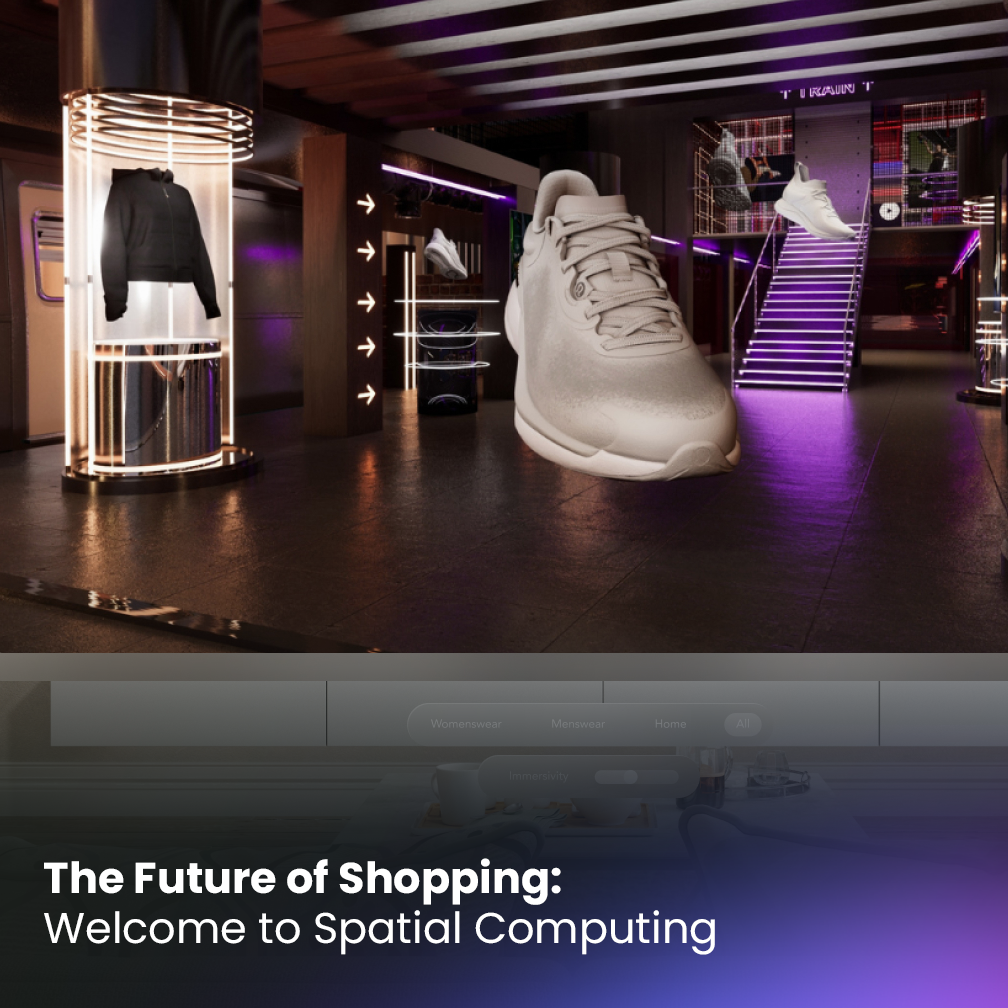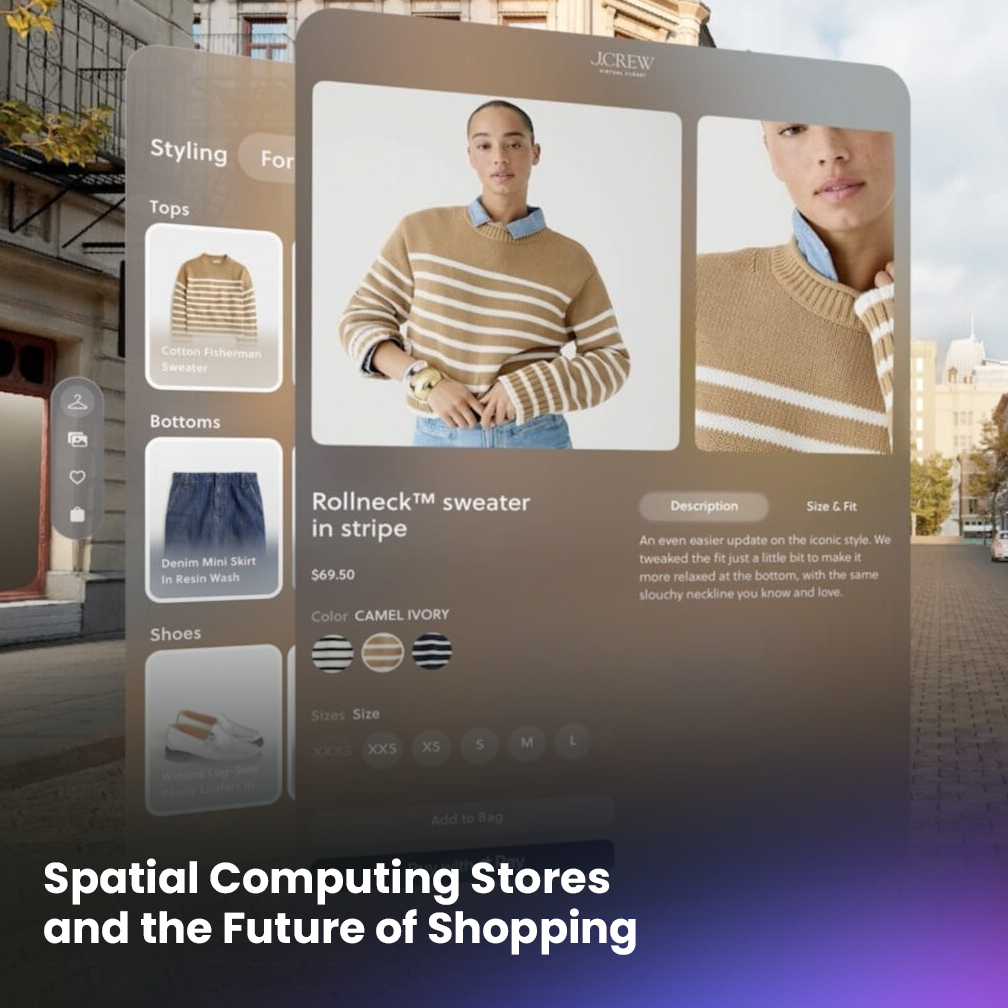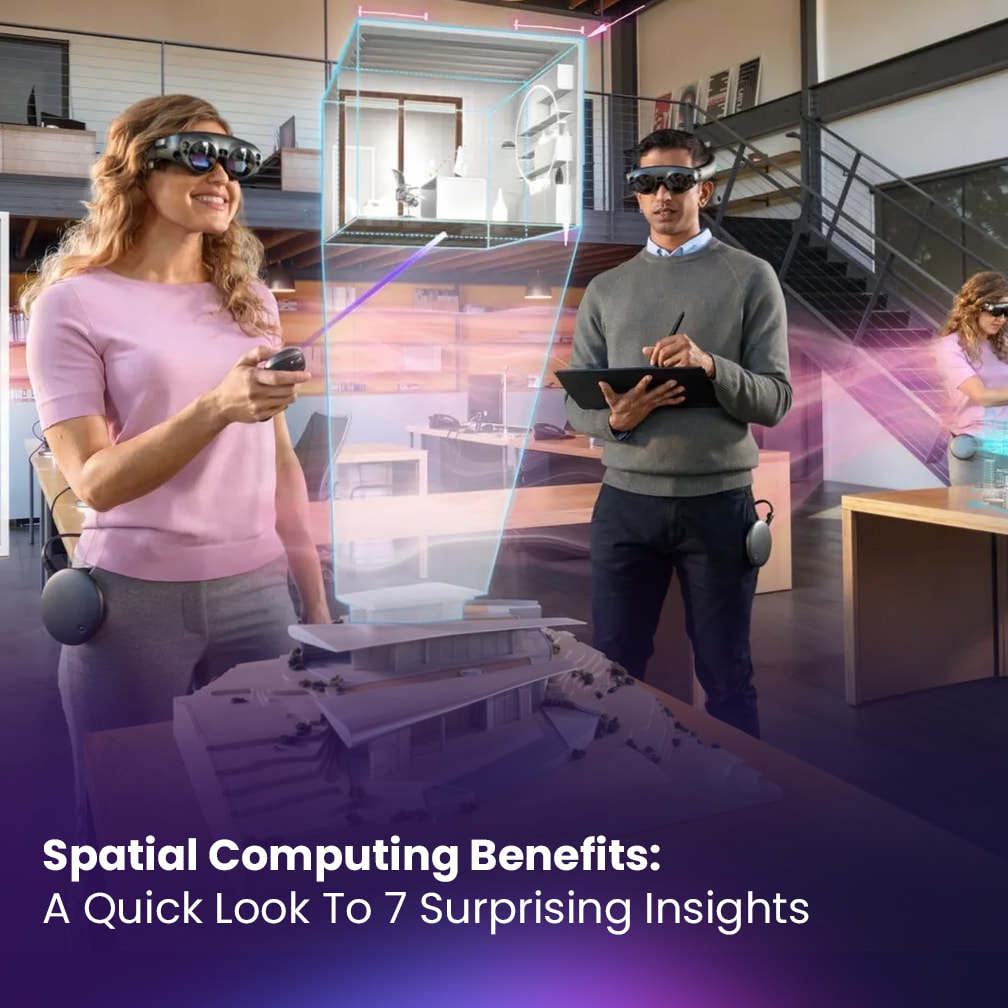The future of retail in Spatial Computing
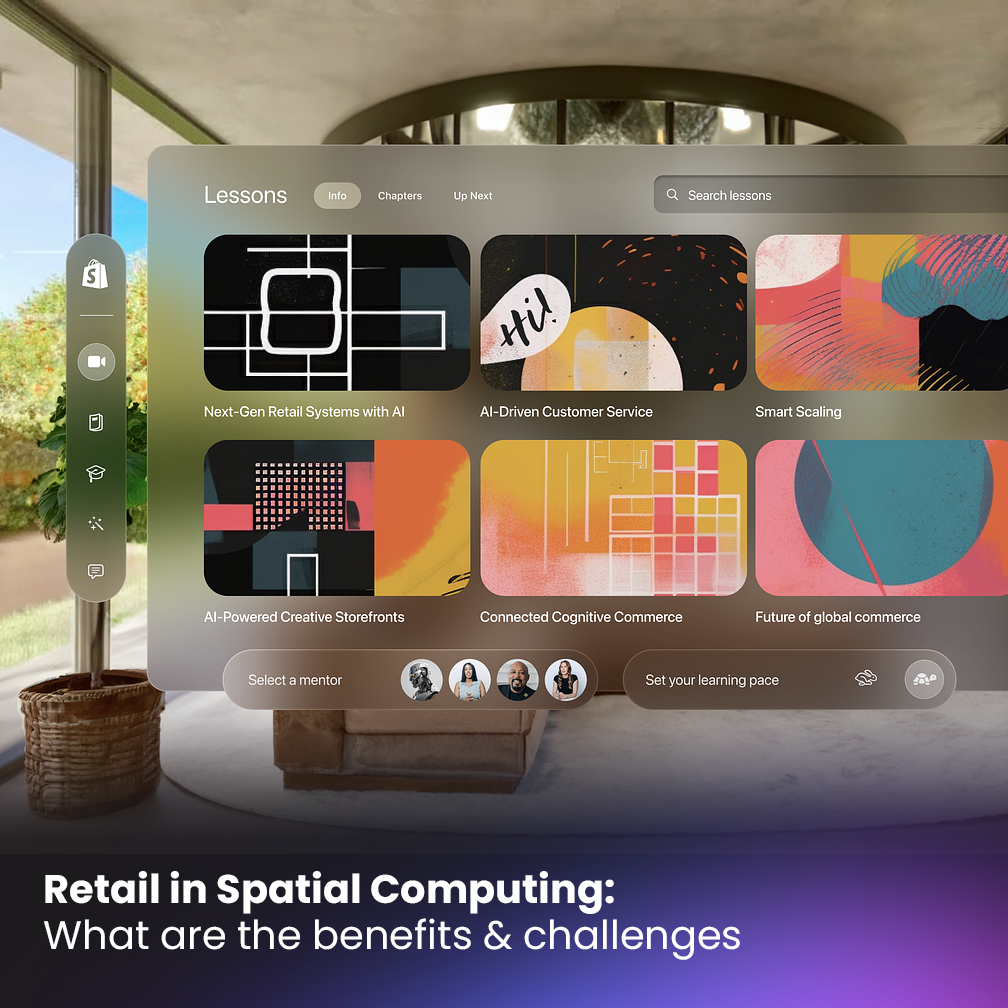
Estimated reading time: 8 minutes
As technology continues to push boundaries, a new frontier has emerged, reshaping the way we buy and sell goods. Imagine stepping into a vibrant virtual world, where you can browse virtual shelves, interact with lifelike avatars, and experience the thrill of shopping like never before. Retail in Spatial Computing has become more than just a concept; it’s a thriving ecosystem that is redefining the future of commerce.
In this article, we explore the exciting possibilities and potential challenges of this emerging landscape. We will delve into the potential paths for retail organizations in the evolving Spatial Computing and its underlying infrastructure.
What exactly is Spatial Computing?
To understand the implications of retail in Spatial Computing, let’s first answer the question ‘What is Spatial Computing?’
The world is poised for a transformative shift as Spatial Computing, an entirely online virtual world, prepares to revolutionize our lifestyles and work dynamics.
Coined in Neal Stephenson’s 1992 science fiction novel Snow Crash, the term “Spatial Computing” refers to a shared virtual space that facilitates simultaneous access for multiple users.
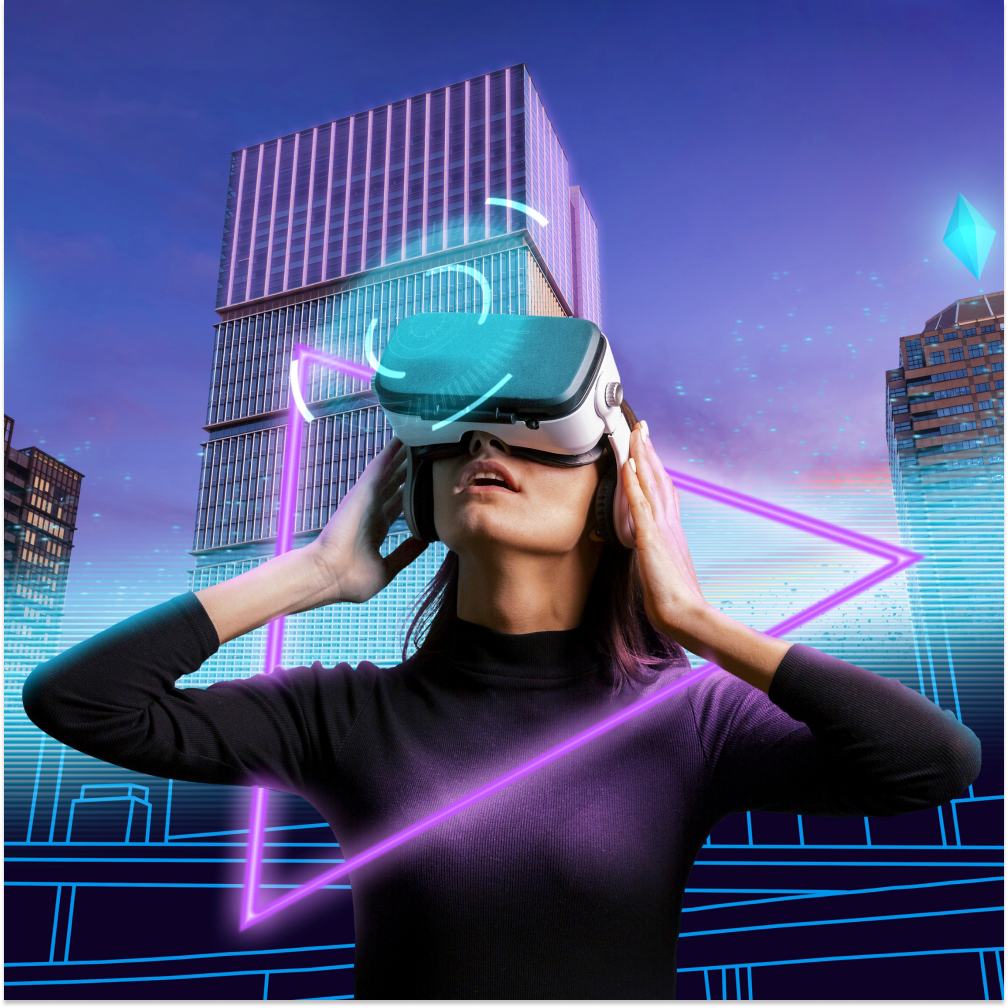
With significant investments from tech giants like Facebook and Google into virtual reality (VR) and augmented reality (AR) technologies, Spatial Computing has gained considerable momentum in recent years.
These advancements have the power to reshape human interactions and our perception of reality, making Spatial Computing the logical progression in this evolutionary journey.
A key attraction of Spatial Computing lies in its capacity to foster virtual connections among individuals, facilitating socialization, gaming, and even professional gatherings such as business meetings and conferences.
By transcending geographical limitations, Spatial Computing has the potential to unite people from across the globe in novel and thrilling ways. Moreover, Spatial Computing presents tantalizing prospects for immersive and interactive experiences.
Through VR and AR technologies, users can explore fantastical realms and environments that surpass the constraints of the physical world. This transformative potential also extends to retailers. Retail in Spatial Computing can revolutionize customer engagement and sales tactics within the virtual world.
How can Spatial Computing be used in retail?
Spatial Computing holds immense potential for transforming the retail industry in various ways. Here are a few examples of how retail in Spatial Computing can work:
- Virtual stores: Businesses can open a store in Spatial Computing, allowing customers to explore and purchase products from the comfort of their own homes. Using virtual reality (VR) or augmented reality (AR) technologies, customers can virtually try on items or even visualize how products would look and function in real life. This immersive and interactive experience enhances convenience and removes geographical barriers.
- Immersive experiences: Retail in Spatial Computing can encompass immersive experiences that go beyond traditional brick-and-mortar stores. Through VR technology, customers can virtually try out products, such trying as out clothes or simulating home renovation projects. These experiences create a deeper engagement and understanding of the products, leading to more informed purchasing decisions.
- Enhanced marketing and advertising: Spatial Computing opens up new avenues for retailers to market and advertise their products. Brands can create virtual events, exhibitions, or experiences where customers can interact with products and learn more about them in a fun and engaging manner. This innovative approach allows for highly targeted and personalized marketing campaigns, enabling retailers to reach a wider audience and establish stronger connections with customers.
- Social shopping: Spatial Computing facilitates social interactions and collaboration among shoppers. Customers can explore virtual shopping malls, interact with friends, or seek recommendations from others while making purchase decisions. This social aspect of Spatial Computing enhances the overall shopping experience, bringing back the sense of community that traditional shopping centers offer.
- Virtual economy and digital assets: With the emergence of non-fungible tokens and blockchain technology, retail in Spatial Computing can include creating and selling digital assets related to their products. This includes limited edition digital collectibles, virtual fashion items, or in-game accessories. The virtual economy within Spatial Computing allows for new revenue streams and unique customer experiences.
By embracing Spatial Computing, retailers can revolutionize the way they engage with customers, offer innovative shopping experiences, expand their reach, and tap into the growing digital economy.
The challenges of retail in Spatial Computing
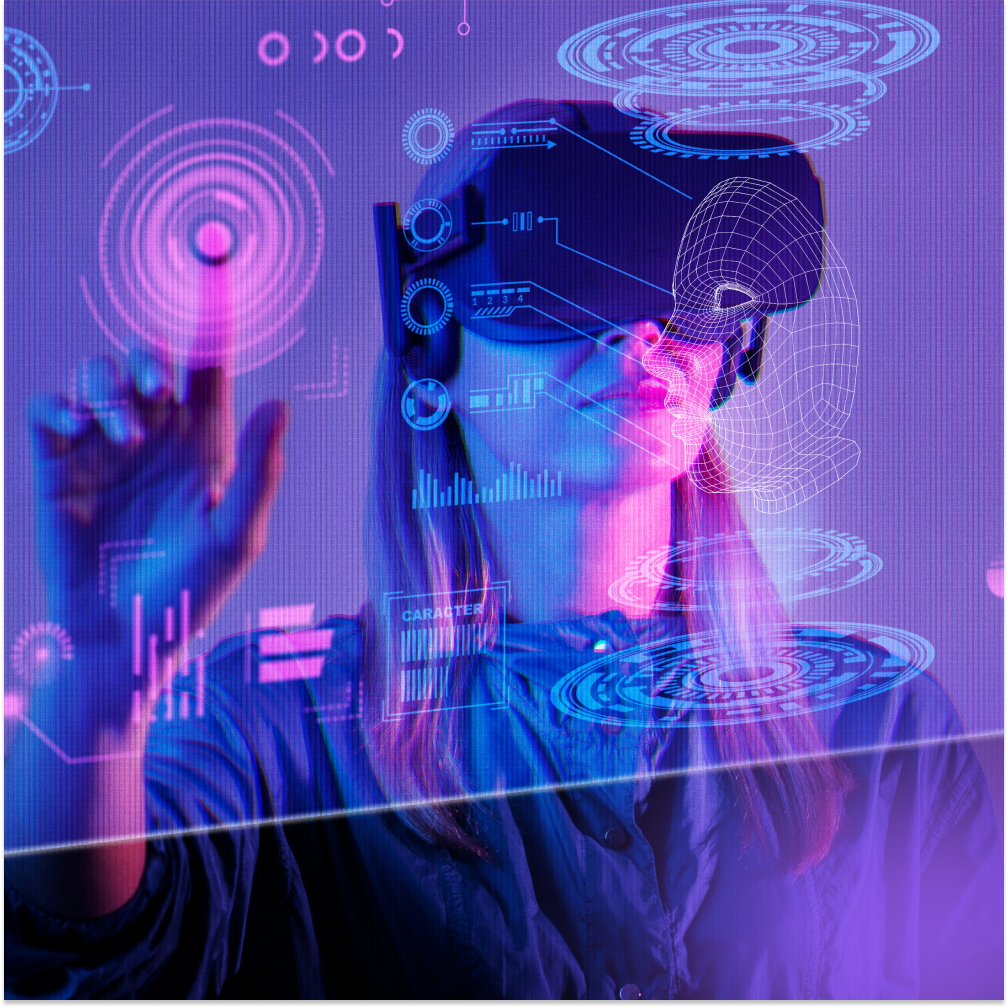
While Spatial Computing presents exciting possibilities for retail, it also comes with its own set of challenges. Here are some of the key challenges that retail in Spatial Computing may face:
- Technology and infrastructure: Spatial Computing relies heavily on advanced technologies such as virtual reality (VR), augmented reality (AR), and high-speed internet connectivity. Ensuring that the infrastructure is accessible and scalable can be a significant challenge for retailers, especially for smaller businesses with limited resources.
- User adoption and familiarity: Despite the growing interest in Spatial Computing, widespread user adoption may take time. Many consumers may still be unfamiliar with the technology or hesitant to fully embrace virtual shopping experiences. Retailers will need to invest in educating their customers and making the transition to Spatial Computing as seamless and user-friendly as possible.
- Security and privacy: As Spatial Computing involves the collection and processing of personal data, ensuring security measures and protecting user privacy becomes crucial. Retailers need to establish trust and implement strict security protocols to safeguard customer information.
- Virtual experience realism: Spatial Computing aims to replicate real-world experiences virtually. However, achieving a high level of realism and immersion can be challenging. Retailers must invest in creating realistic virtual environments, accurate product representations, and seamless user interactions to provide customers with engaging and satisfying experiences.
- Ethical and legal considerations: As Spatial Computing evolves, ethical and legal concerns surrounding intellectual property rights, digital ownership, and user-generated content may arise. Retailers must navigate these challenges and adhere to relevant regulations to protect their brand, prevent infringement, and ensure fair and transparent transactions.
- Cost and return on investment: Embracing retail in Spatial Computing requires significant investments in technology, talent, and infrastructure. Retailers need to carefully assess the potential return on investment and weigh the costs associated with building and maintaining a presence in Spatial Computing.
How to open a retail store in Spatial Computing?

Retail in Spatial Computing may encompass opening a store in the virtual space. Here’s a general guide on how to open a store in Spatial Computing:
- Define your goals: Clearly outline your objectives for opening a store in Spatial Computing. Determine what you aim to achieve, whether it’s expanding your customer base, enhancing brand visibility, driving sales, or exploring innovative retail experiences.
- Research Spatial Computing platforms: Explore Spatial Computing platforms and virtual worlds where you can establish your store. Popular platforms include Stage Meta, Decentraland, Somnium Space, Cryptovoxels, and VRChat. Evaluate each platform’s features, user base, and compatibility with your products or services.
- Design and customize: Utilize the tools and features offered by the Spatial Computing platform to design and customize your virtual store. Create an appealing storefront, arrange product displays, and incorporate branding elements that align with your physical store or online presence. Pay attention to visual aesthetics and usability for a compelling customer experience.
- Set up payment systems: Determine how you will handle transactions within Spatial Computing. Explore options for integrating virtual payment gateways or utilizing blockchain-based payment solutions. Ensure that your chosen method provides secure and seamless transactions for customers.
- Launch and promote your store: Announce the opening of your Spatial Computing store through various marketing channels, including social media, your website, and relevant Spatial Computing communities. Highlight the unique features and experiences your virtual store offers.
- Engage with customers: Actively engage with customers visiting your Spatial Computing store. Offer personalized assistance, respond to inquiries, and provide a seamless shopping experience. Foster a sense of community by organizing virtual events, contests, or exclusive experiences for your customers.
- Monitor performance and adapt: Regularly monitor the performance of your Spatial Computing store. Analyze metrics such as foot traffic, sales conversions, customer feedback, and engagement levels. Use this data to optimize your store, make necessary adjustments, and continuously enhance the customer experience.
Conclusion
In conclusion, the concept of retail in Spatial Computing offers a new and exciting frontier for businesses to explore. As technology continues to advance, it’s clear that virtual experiences will only become more immersive and commonplace. As such, Spatial Computing presents an opportunity for retailers to meet customers in a new digital space and offer unique shopping experiences that were previously impossible in the physical world. While there are still technical and regulatory challenges to overcome, forward-thinking businesses that embrace this new paradigm have the potential to build stronger relationships with their customers and stay ahead of the curve as we move towards an increasingly digitized future.

